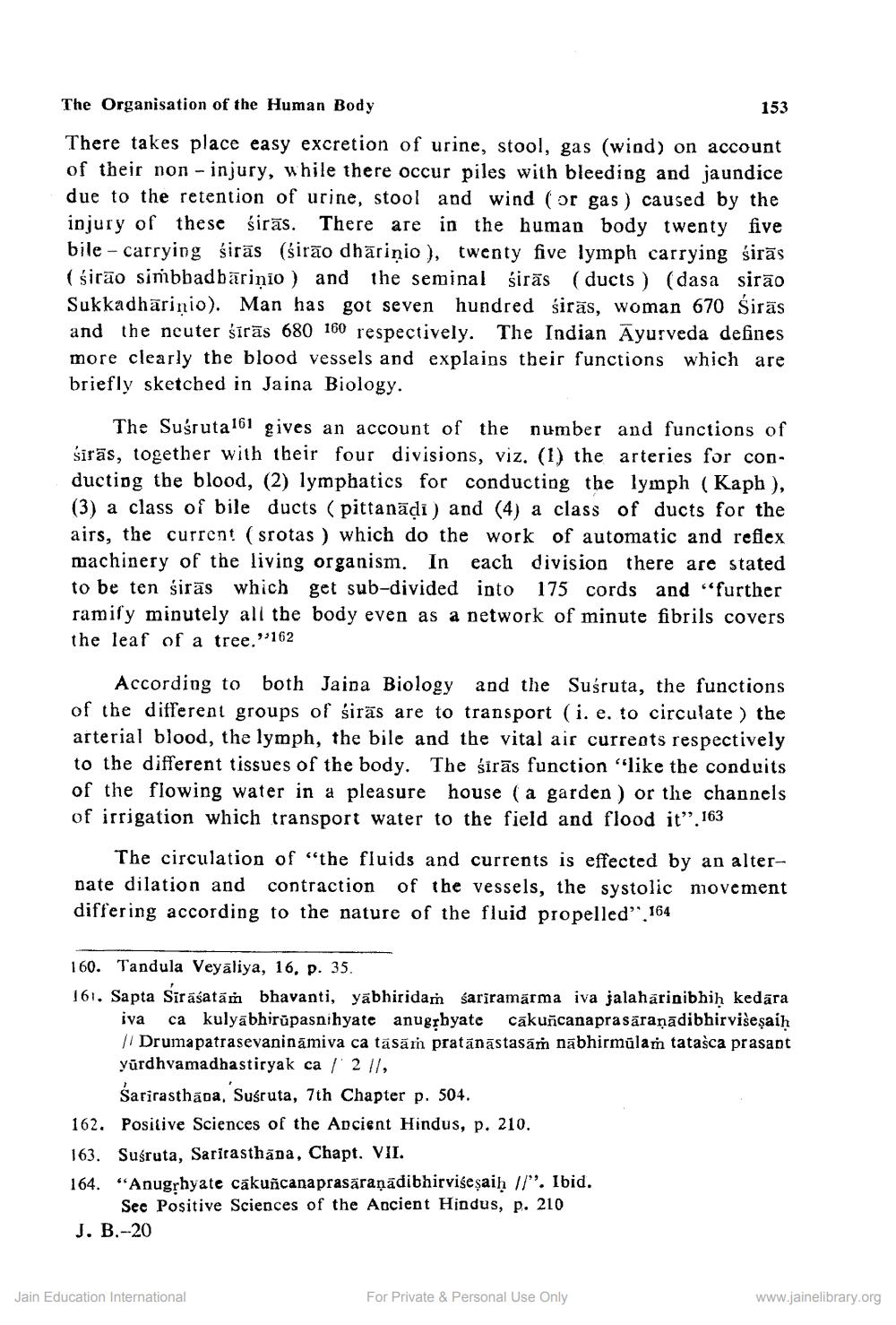________________
The Organisation of the Human Body
There takes place easy excretion of urine, stool, gas (wind) on account of their non-injury, while there occur piles with bleeding and jaundice due to the retention of urine, stool and wind (or gas) caused by the injury of these siras. There are in the human body twenty five bile carrying siras (śirão dharinio), twenty five lymph carrying siras (śirão simbbadbāriņio) and the seminal siras (ducts) (dasa sirão Sukkadharinio). Man has got seven hundred siras, woman 670 Siras and the neuter sīrās 680 160 respectively. The Indian Ayurveda defines more clearly the blood vessels and explains their functions which are briefly sketched in Jaina Biology.
The Suśruta161 gives an account of the number and functions of siras, together with their four divisions, viz. (1) the arteries for conducting the blood, (2) lymphatics for conducting the lymph (Kaph), (3) a class of bile ducts (pittanaḍi) and (4) a class of ducts for the airs, the current (srotas) which do the work of automatic and reflex machinery of the living organism. In each division there are stated to be ten śiras which get sub-divided into 175 cords and "further ramify minutely all the body even as a network of minute fibrils covers the leaf of a tree."162
153
According to both Jaina Biology and the Suśruta, the functions of the different groups of siras are to transport (i. e. to circulate) the arterial blood, the lymph, the bile and the vital air currents respectively to the different tissues of the body. The siras function "like the conduits of the flowing water in a pleasure house (a garden) or the channels of irrigation which transport water to the field and flood it".163
The circulation of "the fluids and currents is effected by an alternate dilation and contraction of the vessels, the systolic movement differing according to the nature of the fluid propelled" 164
160. Tandula Veyaliya, 16, p. 35.
161. Sapta Sirasatām bhavanti, yabhiridaṁ sariramarma iva jalahārinibhiḥ kedara iva ca kulyābhirupasnihyate anugṛhyate cakuñcanapras āraṇādibhirviseṣaiḥ // Drumapatrasevanināmiva ca tāsām pratānastasām nābhirmulam tatasca prasant yurdhvamadhastiryak ca / 2 11,
Sarirasthana, Suśruta, 7th Chapter p. 504.
162. Positive Sciences of the Ancient Hindus, p. 210.
163. Suśruta, Sarirasthana, Chapt. VII.
164. "Anugṛhyate cākuñcanaprasaraṇādibhirviseṣaiḥ //". Ibid. See Positive Sciences of the Ancient Hindus, p. 210 J. B.-20
Jain Education International
For Private & Personal Use Only
www.jainelibrary.org




